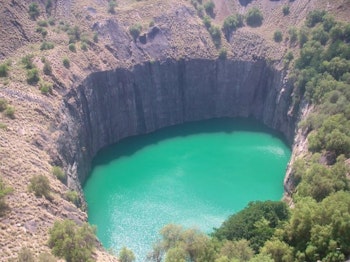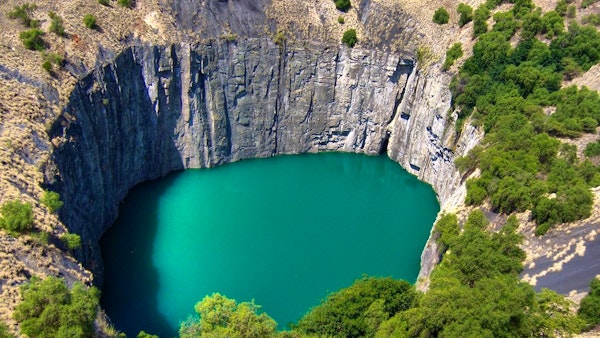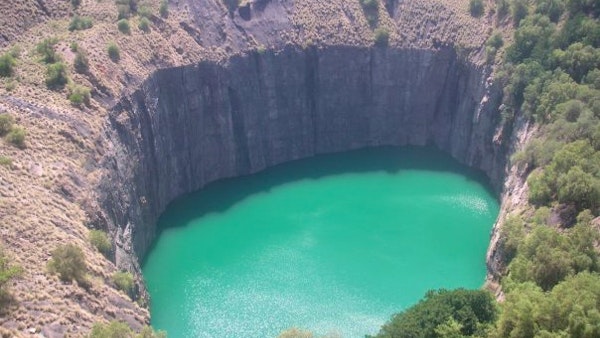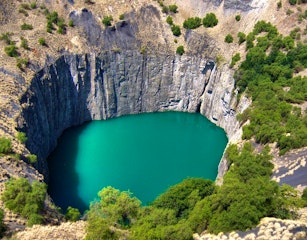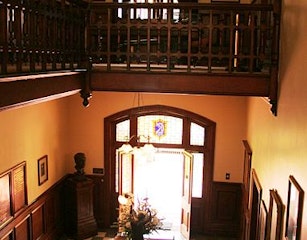The Big Hole
Description
The Big Hole, previously known as Kimberley Mine, is a former diamond mine located in Kimberley (then known as 'New Rush') in the Northern Cape. It is famous for being the largest hole excavated by hand in the world, and for its role in the diamond rush during the 1870s where almost 3 tons of diamonds were excavated.
The Big Hole has a circumference of 1.6km and a depth of 1km. The hole was dug with picks and shovels for the first 240m. After diamond bearing kimberlite pipes were discovered in 1871, thousands of independent miners clamoured for a piece of the action. It eventually reached a point where up to 30,000 miners were working simultaneously in the hole. As the hole got deeper, and the complexity of mining increased, miners began to band together. Ultimately each group was bought by Sir Cecil John Rhodes of De Beers.
Between 1871 and 1914, the mine yielded 14.5 million carats of diamonds (weighing 2.7 tons) from the 22 million tons of rock that had been excavated. The hole was closed as a working mine in 1914, but it is still the largest man-made hole in the world. Today, the hole is encompassed by the Kimberley Open-Air Mine Museum where visitors can learn more about Kimberley’s diamond history.
Map
Nearby Attractions
Click here to see more accommodation options
You may also be interested in browsing our selection of accommodation in Kimberley North or reading about Kimberley North
